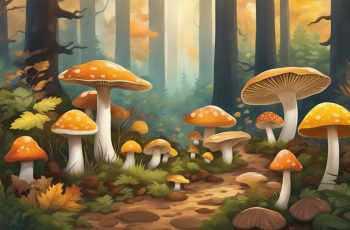Morel mushrooms are an elusive treasure that many outdoorsmen pursue with the fervor of treasure hunters. These prized fungi are not only well-regarded for their distinctive taste but also for the challenge and satisfaction that comes with foraging them. While you might find yourself hiking through the woods to spot their unique honeycomb pattern amidst the underbrush, equally intriguing is their standing in the market. Due to their seasonality and the fact that they’re not easily cultivated, morel mushrooms often command a high price per pound.
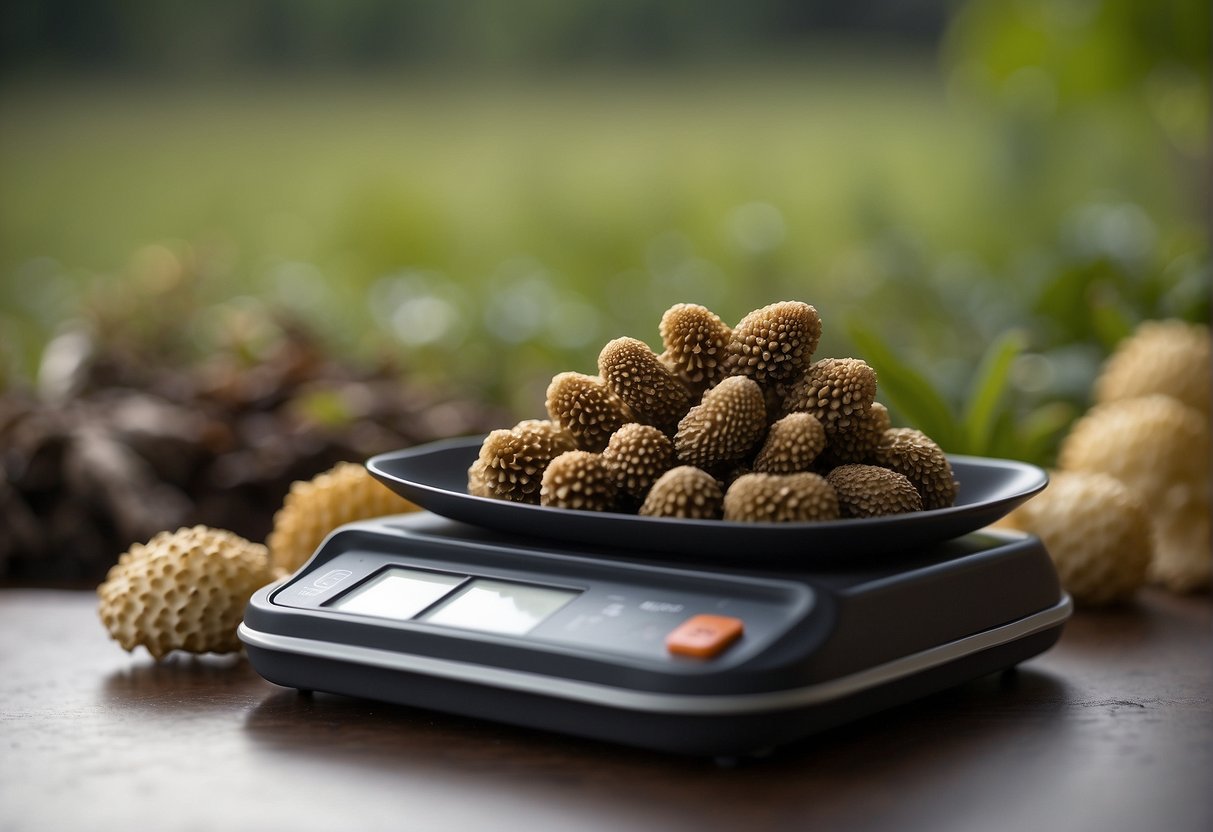
If you’re keen to bring home these delicacies, understanding the market for morel mushrooms per pound is essential. Depending on various factors such as availability, season, and region, you’ll notice that prices can vary significantly. Whether you forage them yourself or purchase them from a market, the value of morel mushrooms is not just in their weight but also in the culinary delight they bring to your table.
Being aware of the current trends and prices for fresh or dried morel mushrooms ensures that you can make informed decisions whether you’re a buyer or a seller. With their rich, earthy flavors and a texture that can enhance many dishes, morel mushrooms offer an experience that’s well worth understanding its place in the market. When it comes to these forest gems, you’re not just buying a pound of mushrooms, you’re buying a taste of the great outdoors.
Identification and Seasonality
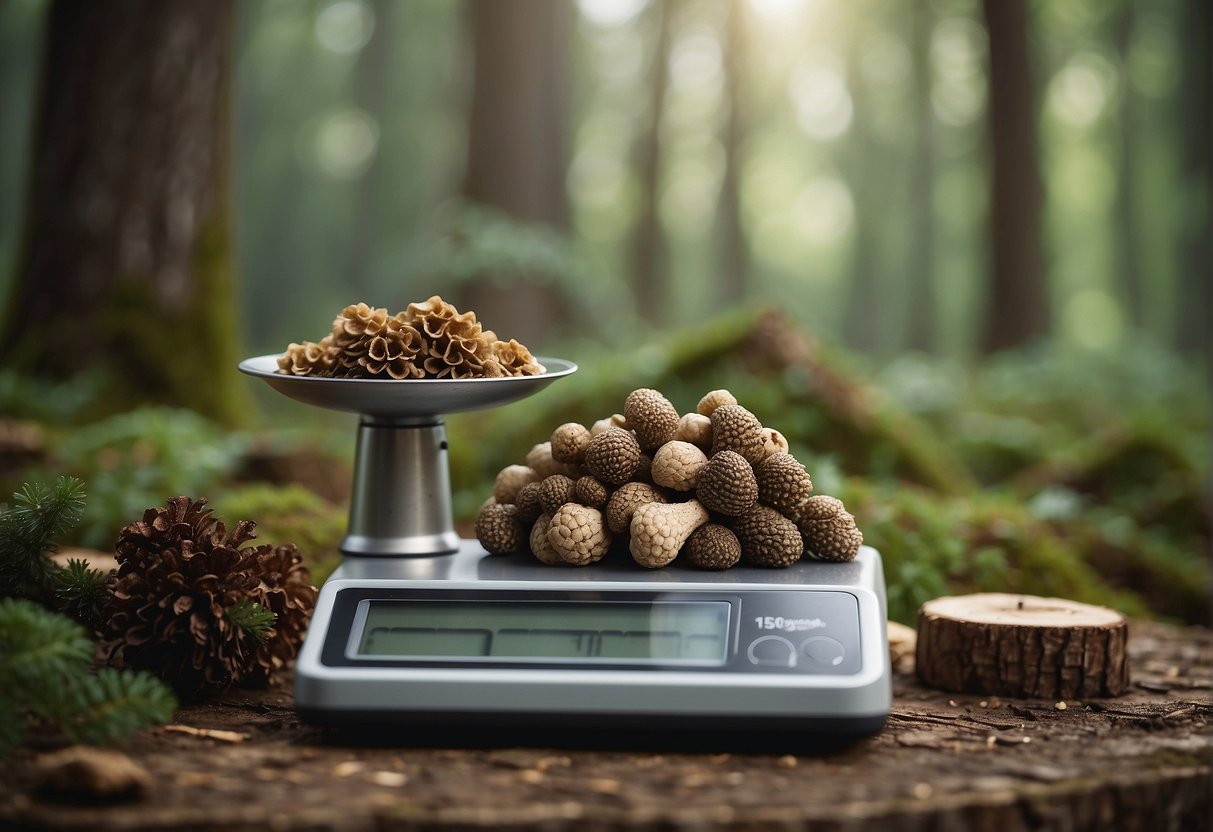
Understanding the identification and seasonality of morel mushrooms is crucial for any forager. Knowledge of species specifics, environmental factors, and optimal foraging seasons can greatly increase your chances of a successful harvest.
Species and Characteristics
Morel mushrooms, known scientifically as Morchella, are revered by outdoor enthusiasts for their distinctive appearance and rich flavor. Morchella species generally exhibit a honeycomb-like cap atop a hollow stem. The intricate ridges and pits on the cap are not just unique in appearance but vital for identification. There are numerous morel species you might encounter, with the common ones thriving in forests and wooded areas. Here are key features to help you verify your finds:
- Cap Shape: Conical with a network of ridges and pits
- Stem: White to pale, hollow, and thicker compared to the cap
- Color: Ranges from blonde to dark brown, depending on the species and age
- Habitat: Prefers deciduous woods, often near ash and elm trees
Optimal Foraging Seasons
Morel mushrooms are a true sign of spring, emerging when conditions are just right. Your best bet is to start looking:
- Early Spring: After the last frost when daytime temperatures hover around 60°F.
- Soil Temperature: Ground should be warm, near 50-55°F, a key trigger for morel growth.
- Environmental Cues: Post-snowmelt with adequate soil moisture.
Timing varies based on your region, but these fungi typically make their appearance from late March to May. You’ll have better luck in southern states earlier in the season, with northern regions following suit as temperatures rise. Keep in mind that morels are elusive; their seasonality depends heavily on the right combination of temperature and environmental factors. Happy hunting!
Culinary Uses and Preparation
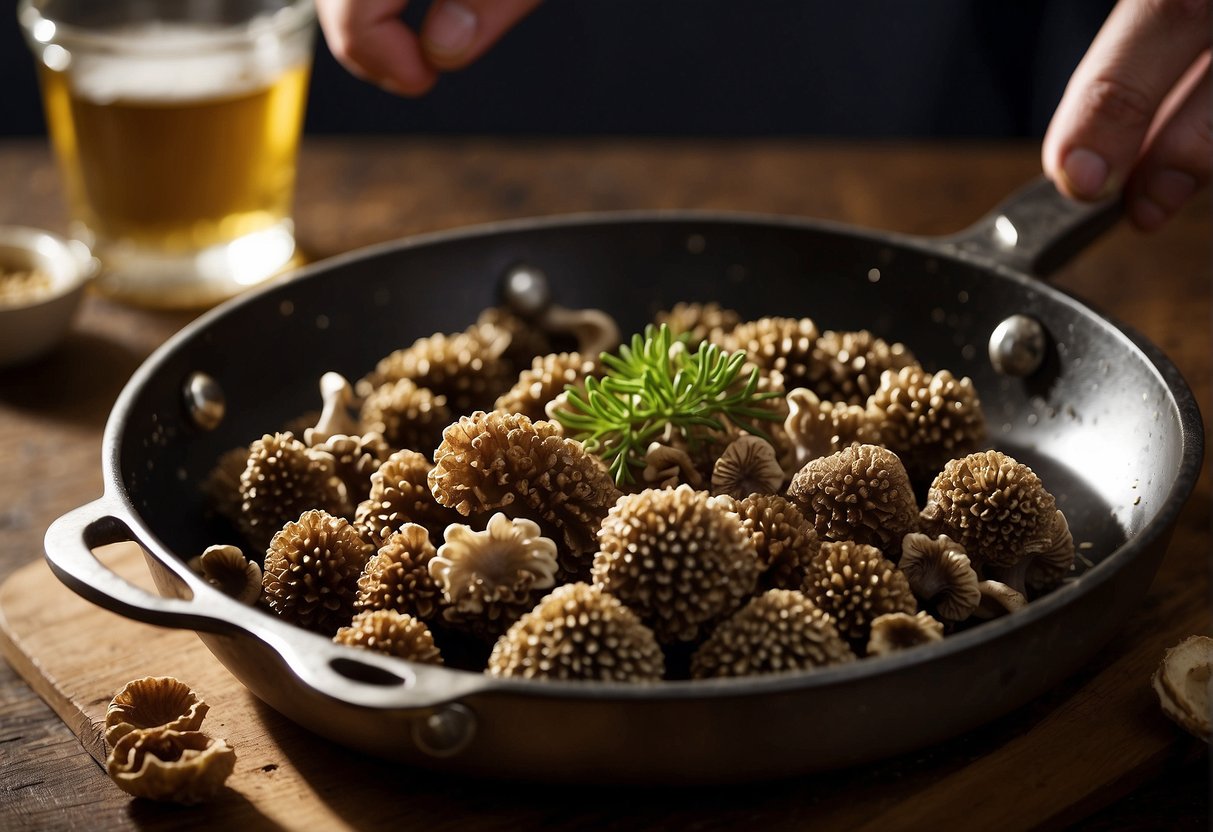
Morel mushrooms are heralded in the culinary world for their unique flavor and honeycomb-like appearance. Their distinct earthy taste and meaty texture make them a sought-after delicacy by chefs and food enthusiasts alike.
Flavor Profile and Pairings
The flavor of morel mushrooms is deeply earthy with woodsy undertones and a subtle nutty essence. Their unique flavor perfectly complements:
- Red meats like steak
- Milder meats like chicken or pork
- Creamy sauces
- Pasta dishes
- Spring vegetables like asparagus and peas
Pairing these mushrooms with complementary ingredients enhances their natural flavor. For a harmonious dish, try incorporating ingredients like:
- Dry white wine
- Fresh herbs such as thyme and parsley
- Parmesan cheese
Cooking Techniques
When you’re ready to cook morels, always clean them thoroughly to remove any residual dirt from their textured caps. Since their honeycomb-like appearance can trap debris, it’s best to rinse them well or soak briefly.
For cooking:
- Sauté morels gently in butter or olive oil to preserve their delicate texture
- Grill over low heat for a smoky touch
- Incorporate into soups and sauces to infuse them with morel’s notable earthy flavor
Remember to cook morels fully, as they are not safe to eat raw.
Preservation Methods
To extend the enjoyment of morels beyond their fleeting season, preservation is key. Two main methods to preserve these gems are drying and freezing:
-
Drying: Air-dry or use a dehydrator, then store in an airtight container. To use, reconstitute in water, which brings back their original texture and concentrates their flavor.
-
Freezing: Blanche morels in boiling water, then cool quickly. Freeze them in a single layer before transferring to a freezer bag for long-term storage, helping retain their texture and flavor.
By following these methods, you can enjoy morels year-round in various dishes, relishing their earthy charm whenever you desire.
Market Insights
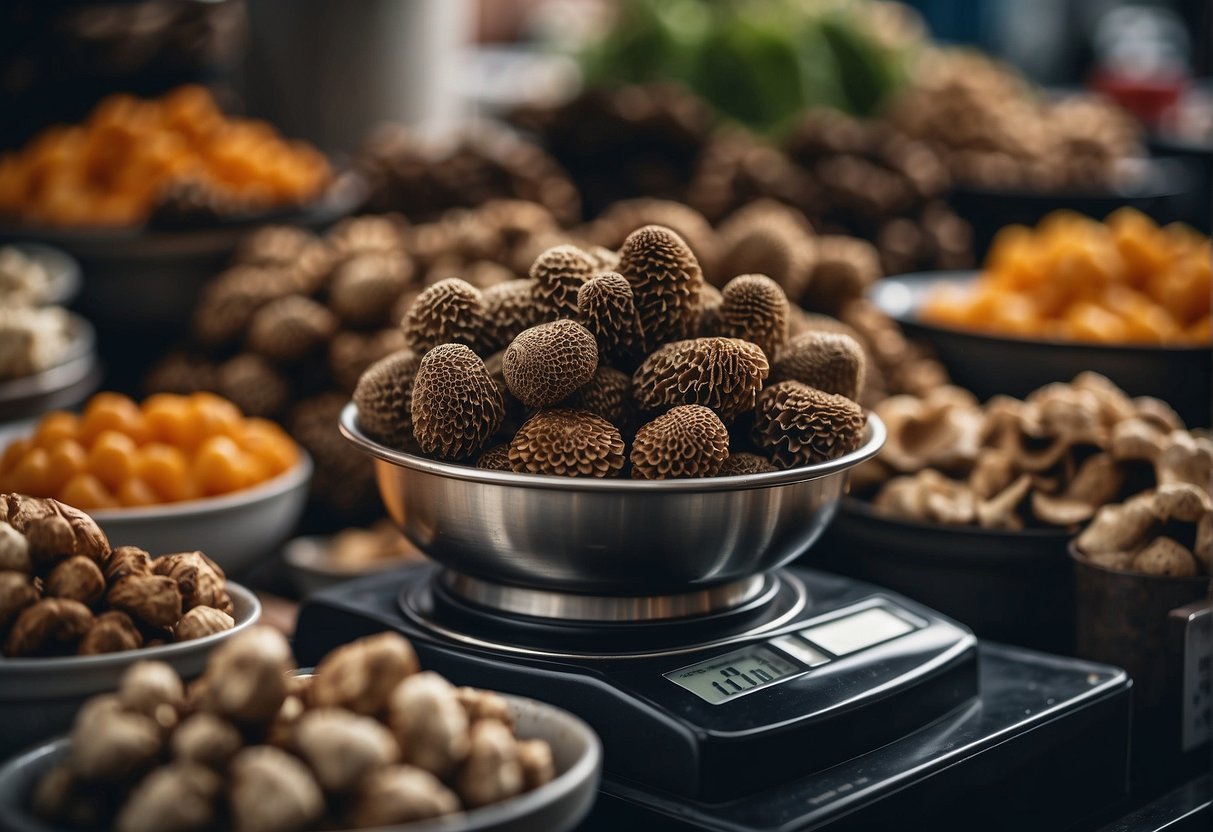
As a discerning buyer or culinary enthusiast with an interest in morel mushrooms, understanding the nuances of their pricing and availability is crucial. Their market value is not static and is dependent on specific conditions and practices.
Price Factors
The price of morel mushrooms per pound can be influenced by numerous variables, leading to fluctuations. Firstly, size and quality are paramount: larger and pristine specimens command higher prices. Fresh morels are often more expensive than dried morels due to their superior flavor and limited shelf life. Furthermore, foraging conditions and seasonal yields significantly impact availability and consequently, pricing.
- Premium quality: $30 – $60 per pound for freshly foraged morels.
- Dried morels: Generally more affordable, but prices vary based on quality.
Factors like rarity and transportation costs to your local specialty food store also play a role in the market price.
Supply Dynamics
When surveying the morel market, it’s essential to grasp the supply and demand dynamics. Due to their rarity and limited availability, morels can sport a high price tag. They are not easily cultivated and are usually foraged, making their supply susceptible to environmental conditions. Restaurants often place bulk orders, which can tighten supply and increase prices for individual buyers.
-
Foraged supply: Varied, dependent on seasonal conditions.
-
Market demand: Influenced by restaurant orders and popularity amongst home chefs.
Buying and Storage Tips
To ensure that you’re getting the best value when buying morel mushrooms, consider the following tips:
-
Freshness: Opt for fresh morels with a firm texture and earthy aroma.
-
Quantity: Bulk orders may secure a better price per pound, ideal for sharing with fellow enthusiasts or preserving.
-
Storage: Store fresh morels in a paper bag within the refrigerator for short-term use, or consider drying them to extend shelf life.
-
Buying in season: Strive to order morels during the peak season to capitalize on the freshest product and competitive pricing.
-
Transportation: Keep in mind that shipping costs can affect the overall price, particularly for prompt deliveries.
By staying alert to these market insights, you position yourself to make knowledgeable purchases that satisfy both your palate and your wallet.
Health Benefits and Nutrition

Morel mushrooms not only provide an exciting hunt in the wild but also a significant boost to your health. Rich in essential nutrients, they are a prized catch for their flavor and healthful offerings.
Nutritional Profile
When you have a pound of morel mushrooms, you hold a treasure trove of vitamin D, an uncommon find in the fungal world. They’re an especially valuable source of this vitamin, with about 206 International Units (IU) per 100 grams. That’s a substantial portion of what you need daily. These fungi are also packed with protein and fiber, supporting muscle maintenance and digestive health, respectively.
Morels are not lacking in essential minerals either. They provide copper, important for your blood vessels and nerves, and potassium, which is key to heart and muscle function. Here’s a quick glance at what these mushrooms offer per 100 grams:
- Protein: Around 3 grams
- Fiber: Approximately 2.8 grams
- Vitamin D: 206 IU
- Copper: 0.4 milligrams
- Potassium: 318 milligrams
Dietary Importance
The nutritional benefits of morel mushrooms are undeniable. They’re low in fat and carbs but high in valuable nutrients, fitting into your diet whether you’re aiming to maintain weight, build muscle, or simply live healthily. The protein content in morels can fill you up and aid in repairing and building muscle tissue.
The dietary fiber found in morels is crucial for a healthy digestive system, helping you feel full and promoting regularity. Moreover, the essential minerals present in these fungi, like copper and potassium, play a vital role in various bodily functions. Proper levels of vitamin D from morels contribute to strong bone health and overall well-being. These mighty mushrooms are truly a gem from the forest to your plate.

